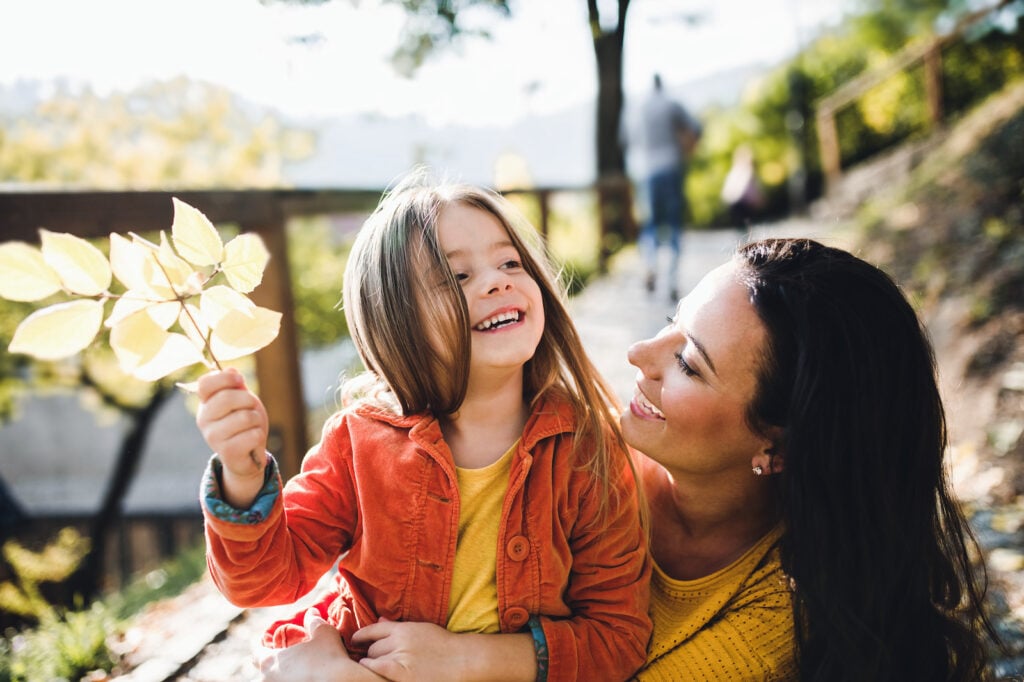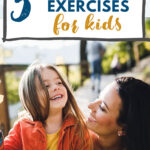3 Mindfulness Exercises to Practice with Kids
Mindfulness is the key that unlocks a healthy response to most of life’s stresses and pressures. It even helps us enjoy and appreciate the good moments in life. Practicing mindfulness exercises with kids is a worthwhile way to build these skills early on.

Life with kids translates into a lot of hectic days. It can become easy to get consumed by the chaos – and in turn – disconnected from enjoyment of the moment.
As we see our children growing up, we are constantly reminded of the preciousness of this time. So how can we slow down enough to appreciate these beautiful experiences with our kids?
Mindfulness is a wonderful way for both parents and their children to pause and enjoy the moment. In essence, mindfulness is a purposeful awareness of the present moment without judgement of what is happening.
When you are mindful, you are a neutral observer of yourself, your interactions with others and the world around you. It can open your eyes to little moments that you may otherwise take for granted due to multitasking, running on autopilot, or being overwhelmed by the general busyness of life.
Mindfulness has many modalities such as meditation, journaling, breath work, visualization, awareness exercises, and even creative arts. Mindfulness is often associated primarily with meditation and this can feel limiting and intimidating if you’ve never done it before. So, be sure to try a number of different mindfulness practices with your children to see which modalities resonate most with you and your family.
It’s helpful to remember to give yourself grace when you try something new. Allow the experience to unfold however it may without judgement of the process or comparison to your expectations.
It’s also helpful to remember that some days one modality might work for you and your child and other days you’ll need something different to address your current mental and emotional needs. Every day is different so it’s always a good idea to have a number of strategies in your self-care toolkit.
Josephine Atluri is an expert in meditation and mindfulness, helping thousands of people overcome adversity to find joy. Here, she shares her three top mindfulness exercises to try with your child.
Guided Meditation
When doing a meditation with your child, it is ideal to keep it short and sweet. There’s a misconception that you need to meditate for long periods of time in order to reap the full benefits of mindfulness such as reduced stress and anxiety, improved sleep and digestion and increased joy, serenity, calm, and focus. In actuality, with just a few minutes of mindfulness in a quiet place, you can instantly feel positive effects. Rather than focusing on length of time, it’s more important to be consistent with a mindfulness meditation every day.
In this meditation, you and your child will sit next to one another with your eyes closed. You can even have your child sit on your lap if you’d like to have a closer connection.
- Begin by taking a few deep breaths in and out of your nose. Make each breath slow and steady.
- Ask your child to observe how this slow breathing is making them feel.
- Then invite your child to repeat a mantra by speaking it softly or saying it in their mind. Ask them to repeat, “I am strong, brave, kind, and loving.” Alternatively, replace the adjectives with affirmations that you would like your child to focus on.
- Ask your child to repeat this mantra three times.
- End your meditation by taking two deep breaths together.
- Wiggle your fingers and toes before opening your eyes.
If your child responds well to this, you can find dozens of guided relaxation scripts here. Little ones especially respond to this blowing away worries meditation script.
Journaling
Practicing gratitude is another way of being mindful but without having to sit still with your eyes closed which can be difficult for some children. In this exercise, you will ask your child to think about their day and share with you one or two things for which they are grateful.
Depending on the age of your child and the format in which you want to interact with them, ask your child to either write their gratitudes on a piece of paper in a list or in a more descriptive way, draw their gratitudes, or engage in a conversation. Both you and your child will come up with your gratitudes and then share with one another.
Reflecting on gratitude is a great mindfulness practice because it sparks your awareness of what you have in life or what you experienced that day. Many times we are so busy that we don’t notice the wonderful things that surround us. Being grateful gives us that precious opportunity to pause, ignite awareness and enjoy the moment.
Journaling is a wonderful lifelong habit to start. It can help kids process their emotions and is especially helpful for teens.
Breathing Exercises
Breathing exercises are another useful mindfulness technique because it invites awareness of how the breath is moving through our body. Oftentimes, we walk around taking shallow breaths or sometimes even holding our breath. Taking slow, intentional breaths, on the other hand, calms our nervous system, moving us from a state of stress and into a more peaceful frame of mind.
The next of these mindfulness techniques to try with your child is a 4-5-6 pattern of breath. Sit next to your child and ask them to help you keep count using their fingers. Inhale slowly via your nose for a count of four seconds. Then hold your breath for five seconds. Finally, exhale slowly via your nose for six seconds. Repeat this pattern with your child however many times it feels appropriate.
Each of the mindfulness practices above will spark curiosity and cultivate an awareness of oneself and the world around them. If you are hoping to include a mindful moment every day and feel overwhelmed with the idea of squeezing yet another thing into your busy schedule, try to pair your mindfulness exercise with a habit that you already do daily.
Perhaps you can incorporate a mindful moment at family dinner time. Try mindful eating where you encourage everyone to be present as they eat and really focus on the taste and texture of the food.
As you enjoy these special moments of presence with your family on a regular basis, your awareness will start to grow. Soon you will begin to notice the beauty of life around you outside of your dedicated mindfulness time with your child. When this happens, you will transition from practicing mindfulness to living a mindful lifestyle.

